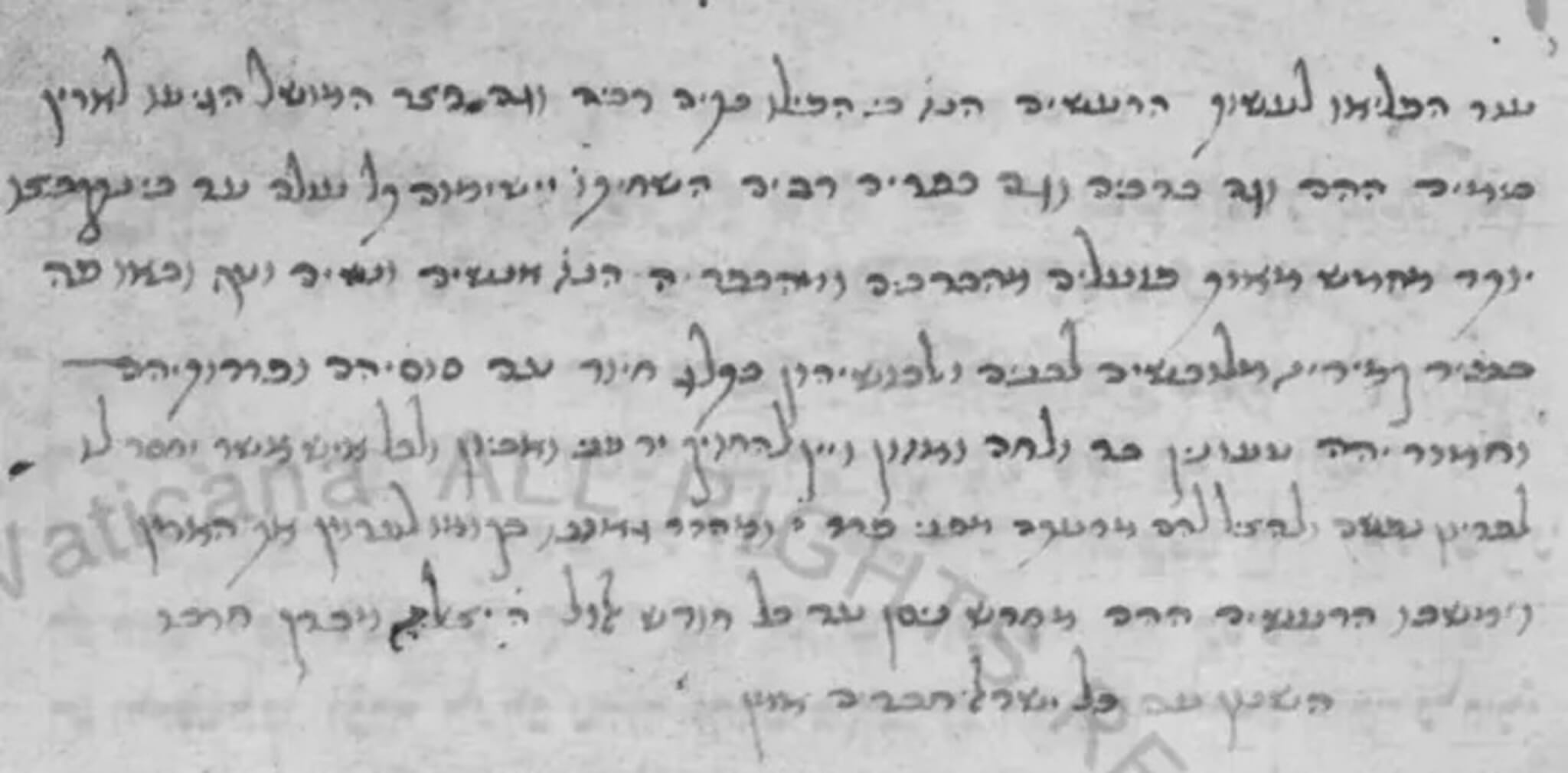ALBANY, Calif. — What does one do to learn more about Italy’s earthquake history? Turn to a Hebrew prayer book, of course. In a serendipitous discovery, a 15th-century note found in a Hebrew prayer book at the Apostolic Vatican Library has shed light on an unknown earthquake that struck Italy’s Marche region in the central Apennines.
This newfound historical account fills a significant gap in Italy’s seismic record and raises questions about our understanding of earthquake occurrences in documented history.
“The wealth of historical sources in Italy is undoubtedly one of the richest, but it is equally subject to gaps both in terms of time and in places,” says study author Paolo Galli, who found the note in the Apostolic Vatican Library while looking for contemporaneous accounts of another historic Italian earthquake, in a media release. “Unlike the Kingdom of Naples, for example, the production of documentation related to earthquakes has certainly been poorer in the Papal States, of which the Marche Region was a part in the 15th century.”

Italy boasts a wealth of historical sources, making it one of the richest repositories of historical earthquake data. However, these records often have gaps, both in terms of time and location.
The discovered note, inscribed on a leaf of a prayer book crafted in Camerino in September-October 1446, provides a vivid account of an earthquake that struck the region. The eight lines of text describe the quake’s impact on Camerino, where it toppled houses, the governor’s courtyard, and reduced cities and villages to ruins. The note also mentions the charitable response of people, who arrived in Camerino dressed in white attire, bringing food and supplies to assist the affected.
According to the note, the earthquakes persisted in the region from March to September. Importantly, this document stands as the sole evidence of a damaging earthquake in the Marche region during the 15th century. Another potential indication of such an earthquake comes from a 1446 petition seeking funds for the restoration of city walls and a castle in Petrino, a town located 20 kilometers from Camerino.
Italy’s earthquake history in the 15th century is sparsely documented, with only 450 known earthquake site observations. Roughly half of these observations pertain to a significant seismic event in 1456 in the south-central Apennines. Galli’s quest for more information on this sequence led him to the unexpected discovery of the prayer book.
“The earthquake of 1456, or rather, the earthquakes of 1456, represent the most catastrophic seismic sequence that occurred in the late Middle Ages in central-southern Italy,” explains Galli. “Despite the abundance of historical sources, particularly a specific treatise on the earthquake written by the famous humanist Giannozzo Manetti, we still do not have certainties about the different epicentral areas and, therefore, the parameters of individual mainshocks—magnitude and epicenter—and their seismic sources.”
The description of the damage in the recently uncovered note suggests that Camerino may have experienced intense shaking, estimated at an 8 on the Mercalli-Cancani-Sieberg intensity scale. This level implies severe damage, partial building collapses, and the fall of columns, monuments, and walls.
Galli posits that the Camerino earthquake might have had similarities to a 1799 earthquake sequence in the region, where a magnitude 6.2 earthquake caused similar intense shaking. While this remains a hypothesis, comparing the epicentral area and the extent of damage in Camerino and its surroundings suggests a resemblance to the 1799 event.
“In particular, the manuscript mentions that many settlements around Camerino were reduced to piles of stones, indicating that the epicentral area was possibly the same as in 1799,” adds Galli. “Similarly, the absence of information in the far field suggests that the earthquake was likely caused by a shallow-depth fault, as probably occurred in 1799.”
The study is published in the journal Seismological Research Letters.
You might also be interested in:
- Hundreds of shallow earthquakes detected along California coast during 8-month study
- Comedy’s origin story? 15th-century manuscript reveals the roots of British humor
- ‘Invisible message’ on 15th-century medieval manuscript discovered by college students

